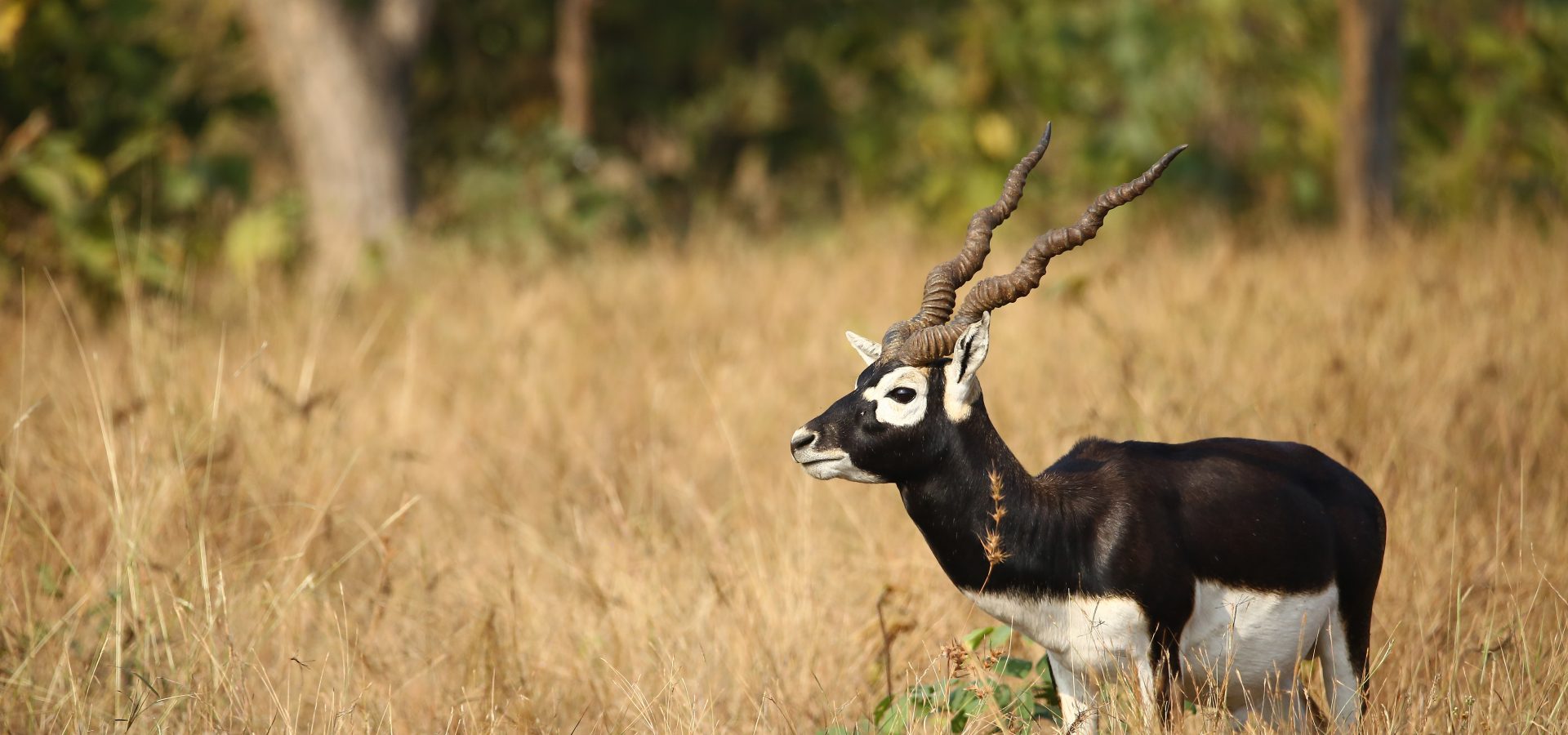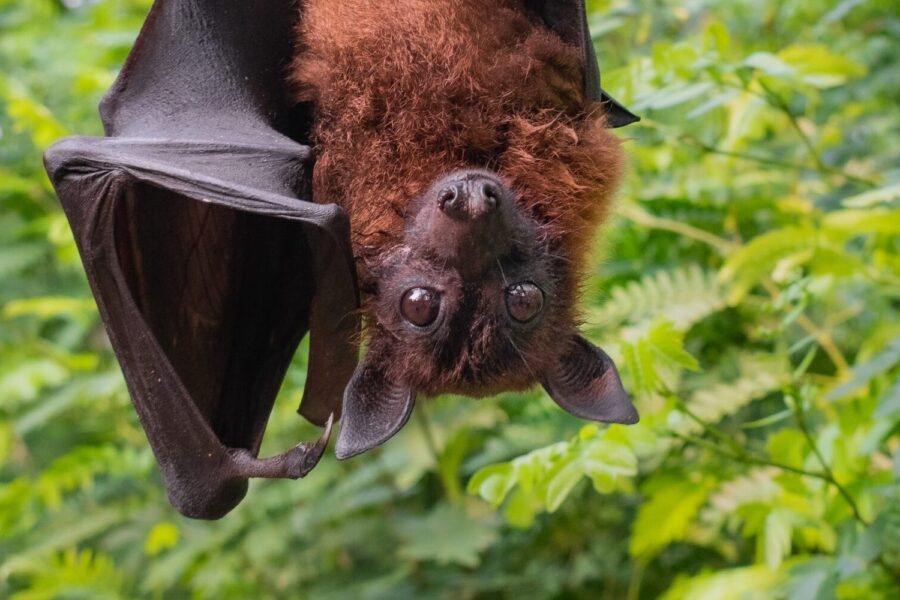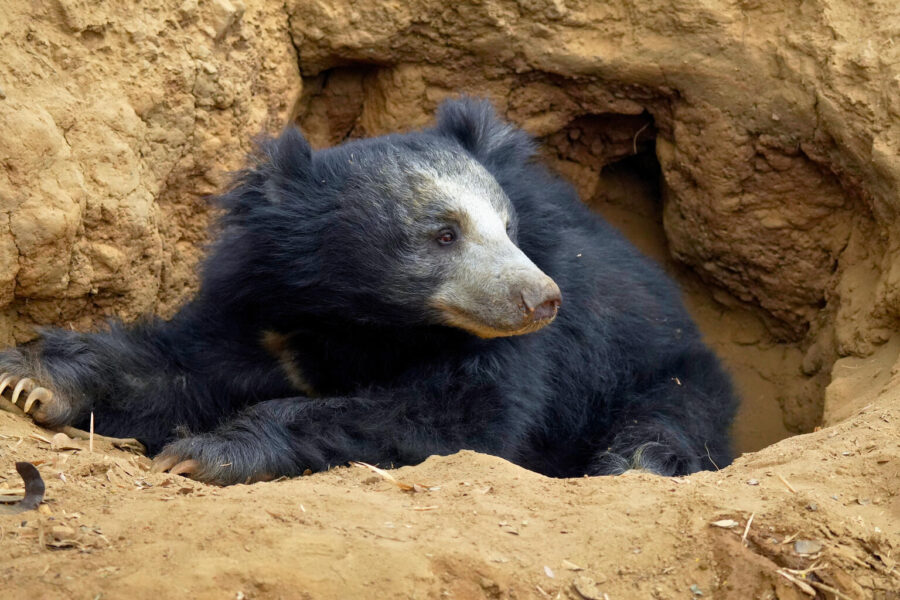Ungulates are hoofed animals that prefer walking on their toes. The term ungulate is derived from the Latin word unguis which translates to ‘nail, claw, or hoof’ in English. As far as the native, extant, wild ungulate diversity is concerned, India is represented by two orders — Artiodactyla (even-toed) and Perissodactyla (odd-toed). While even-toed ungulates include Pygmy hog, Musk deer, Hangul, and Gaur, odd-toed ungulates comprise Wild ass and Rhinoceros, among others. A total of 23 genera and 39 species of ungulates are found within India.
Here are some ungulate species that Wildlife SOS has rescued, provided medical care to, and successfully released back into the wild!
Nilgai
Translated as ‘blue cow’ from Hindi, Nilgai (Boselaphus tragocamelus) is one of the largest Asian antelopes, endemic to the Indian subcontinent. While bulls (male ungulates) have horns and bluish-grey coats, females are smaller with tawny-coloured coats. Inhabitant of 16 states in India, the even-toed ungulate is known to pose a serious challenge to agricultural production by damaging crops. Protected under Schedule III of the Indian Wildlife (Protection) Act, 1972, they are threatened due to human-wildlife conflict, hunting, and habitat loss.
In July 2022, the Wildlife SOS Rapid Response Unit received a call on the 24-hour rescue helpline about a Nilgai calf in need of medical aid in West Delhi. Injured by a pack of feral dogs, the caller had managed to move the calf to a safer location. Our team arrived at the spot, and after having found no sign of the mother, the ungulate calf was transferred to the transit facility for treatment. The Nilgai calf sustained superficial injuries on the back, for which it received medical treatment. Soon after its recovery, the calf was released back into the wild.
In another operation conducted in December 2021, our team, along with the Delhi Forest Department, successfully rescued a Nilgai with an injured leg found outside the Delhi Jal Board. The ungulate received treatment at the Asola Bhatti Wildlife Sanctuary.
Hog Deer
The Indian Hog deer (Axis porcinus) is listed as an ‘Endangered’ species in the IUCN (International Union for Conservation of Nature) Red List. Found in a variety of habitats from wet and tall grasslands to swamp and riverine areas in the South and Southeast Asia, the species has lost a large part of its population over the last few decades. The ungulate gets its name from the way it runs through the forests: unlike taking leaps like other deer species, this deer hangs its head low like a hog while running. Hog deer are hunted for their meat, their antlers are used for traditional medicinal products and are kept as trophies as well.
Earlier this year, a juvenile Indian Hog deer was found injured due to attack by a pack of feral dogs in a textile mill based in Mathura. The forest department reached out for our assistance in rescuing and providing medical treatment to the animal. Our team rushed to the safety of the Hog deer and carefully transported the distressed ungulate for treatment. Soon after its recovery, the animal was released back into the wild.
Hangul
Also known as the Kashmir Red deer, Hangul is the state animal of Jammu and Kashmir. Unfortunately, the species has seen a drastic decline in the last six decades as it has been reduced to 10% of its estimated population size. A small population of only 261 individuals has been recorded in the 2021 census by the Jammu and Kashmir’s Department of Wildlife Protection. Male ungulates are distinguished by antlers that are used for defence and territorial fights. Listed as ‘Critically Endangered’ by the IUCN, the species faces numerous ecological and anthropogenic threats.
Due to shrinking habitat, it is now only found around the Dachigam National Park, which is often referred to as the abode of Hangul. Wildlife SOS assists the forest department in Jammu and Kashmir to conduct its population census. Through this scientific exercise, the teams aim to determine the number of adult deer, subadults, and juveniles. Alongside, they are able to study the ungulate’s habitat range, migration patterns, and other critical ecological aspects.
Sambar
Sambar (Rusa unicolor) is a large deer native to the Indian subcontinent, southern China and Southeast Asia. Over the years, the Sambar population across India has dwindled as a result of poaching, loss of habitat, and habitat encroachment. The species now falls under the ‘Vulnerable’ category under the IUCN Red Data List and is also protected under Schedule III of the Wildlife (Protection) Act, 1972.
Last year, our team based in Maharashtra received a call about a large deer that had been hit by a speeding vehicle while crossing the Kalyan Nirmal Highway (NH-222) near Pune district. The injured ungulate was found lying on the roadside when our rescue team reached the location. After crowd control, the Wildlife SOS veterinarians provided on-site treatment to the deer. Once recovered from the abrasions, the Sambar deer was released back into its natural habitat.
A few years ago, our team witnessed yet another case where a female Sambar deer was found trapped inside a nearly 12-feet-deep water tank in a village in Maharashtra. In an operation that took nearly two hours, our team operating out of the Manikdoh Leopard Rescue Centre was able to carry out the rescue successfully. Rescuers extricated the ungulate with the help of rope harnesses. Once rescued, the animal was released into the neighbouring forest. You can make a difference by signing our petition to cover open wells in Maharashtra.
Musk deer
India is home to four Musk deer species (Moschus spp.) — Kashmir musk deer, Black musk deer, Himalayan musk deer, and Alpine musk deer. They inhabit the montane forests and alpine shrublands of the country. The ungulate species are targeted by poachers due to their peculiar scent glands or ‘musk pods’. Musk deer are in high demand for illegal trade due to their scent glands which are used in perfumes and traditional medicines. Male Musk deer are often captured and culled, while poachers can fetch around US $45,000 for just one kilogram of deer musk!
Last year, Wildlife SOS, along with the police and forest department raided a major wildlife crime ring in Jalgaon, Maharashtra. After months of tracking the ring, our team recovered 400 Musk deer parts among other items! Wildlife SOS works to curb the trafficking and illegal trade of wildlife through its anti-poaching unit, Forest Watch.
If you come across a wild animal in distress, please call our 24-hour helpline number! Wildlife SOS operates 24×7 emergency rescue helplines in three cities:
Delhi NCR – +91-9871963535
Agra and Mathura, Uttar Pradesh – +91-9917109666
Vadodara, Gujarat – +91-9825011117
Jammu and Kashmir – +91-7006692300, +91-9419778280





